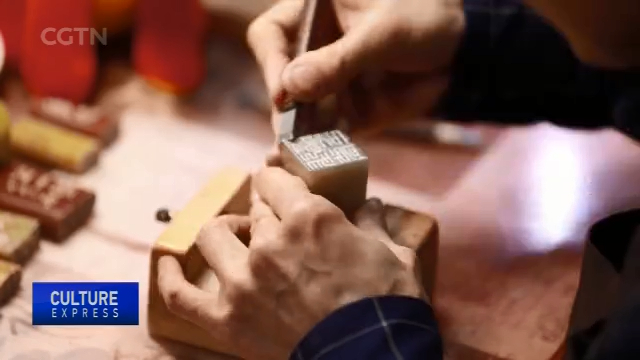
19:19, 28-Jun-2018
Chinese Seal-Cutting: Zhang Kai spreads Chinese culture through traditional art form
Updated
18:52, 01-Jul-2018
04:43

People have used seals in China for centuries. The seals blend elements of engraving, calligraphy, painting and poetry. Nowadays, Chinese artists are bringing back the traditional ways of making seals. One of them is Zhang Kai, who uses the art of seal-cutting to spread Chinese culture to the world.
Creating a seal is a form of art.
ZHANG KAI SEAL CUTTER "My name is Zhang Kai. I am 31 years old. I am from Qufu, Shandong province. My father learned the skill of seal-cutting from grandfather, and my father passed it on to me. Qufu is the hometown of Confucius. Literati from all over the country left behind calligraphy works in Qufu. They see the seal as a carrier of Confucian culture."
The art of seal-cutting can be traced back more than 3-thousand years to the Yin Dynasty. It developed rapidly in the Qin Dynasty from 221 BC when people engraved their names on utensils and documents to claim ownership or for verification in social contacts.
A master seal engraver is able to write in different styles of Chinese script and arrange all the characters in perfect balance.
A perfect seal is very much determined by the engraver's speed, wrist strength, and finger movements, as well as the particular tool used. Nowadays, seals are still widely used, and the art of seal-engraving is actually becoming more popular.
ZHANG KAI SEAL CUTTER "When I was young, my father always asked me to learn calligraphy and seal-cutting. I didn't understand at the time. I felt that these traditional things would be slowly eliminated. And the printing industry would take their place."
Zhang Kai studied computer science at college. At that time, he dreamed of becoming a programmer. His father advised him to open a shop and sell seals on the internet. It turned out not to be that successful in the beginning. But Zhang Kai did not give up. Now he is managing the challenges that come from building a successful operation.
ZHANG KAI SEAL CUTTER "It's not easy to combine online retail with culture. Many people think seals can be made by computer, not carved by hand. I feel although the economy is developing fast, many good aspects of the culture are being discarded or forgotten. We want to see the seal continue to represent honesty and credibility. Once an American customer ordered seven seals. For some reason, the customer only took five, and asked us to hang on to the other two seals for him. Now eight years have passed, and we tried many times to contact him. The two seals are still kept in our safe. We will always keep our promise."
Business was much better by 2010. As Zhang Kai and his father got busier, they started hiring people to help. Many people in this village joined them. Now they have 700 employees.
ZHANG KAI SEAL CUTTER "You have to learn how to cut the seal while copying. In the future, you can create your own style so that others will copy your works. Our country is now attaching much more importance to protecting traditional culture, which has made seal-cutting skills more popular. It's no longer like the situation a few decades ago."
Now their daily orders come to about five-thousand. They sometimes make twenty-thousand seals in a day. Some customers are from Southeast Asia, Japan and South Korea. Some basic knowledge of seal-cutting is printed on a card, so international buyers can learn more about it.
ZHANG KAI SEAL CUTTER "In the eyes of Chinese, people from Shandong are very honest. We hope we can make the seals become representative of Qufu as well as Shandong."
Zhang says the renewed interest in seals both from customers and the government gives him confidence that his career will be a long one.

SITEMAP
Copyright © 2018 CGTN. Beijing ICP prepared NO.16065310-3
Copyright © 2018 CGTN. Beijing ICP prepared NO.16065310-3